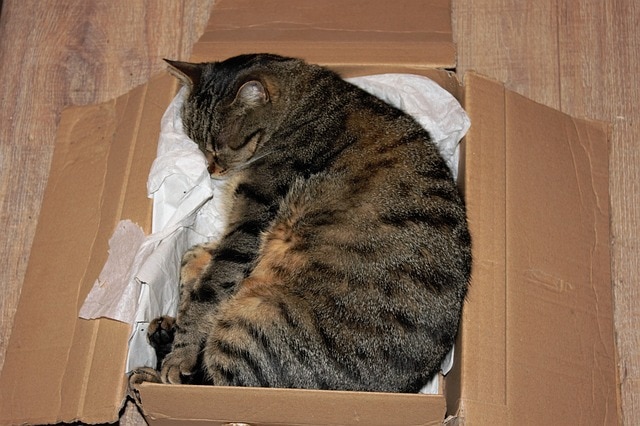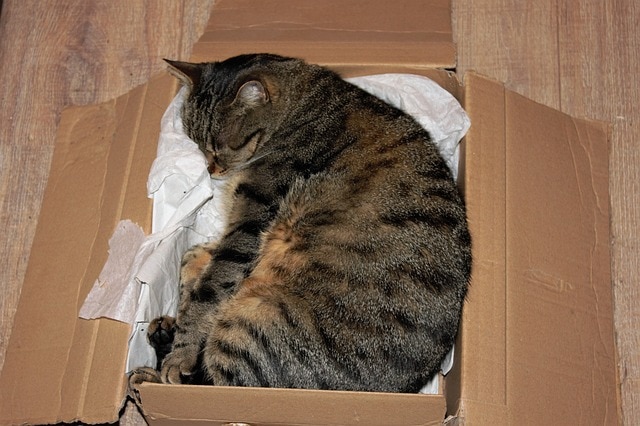
While it is true that cats love boxes, the truth is that if those boxes are moving to a new house, they may not like them as much. As sometimes happens, we need to move and right alongside are our furry friends. We know how stressful moving can be for us humans, but we often don’t think of the toll it may take on our pets. Harriet Williamson has some helpful tips to make that transition smoother for everyone, two- and four-legged alike.
How to move house with your cat
by Harriet Williamson
Moving house is one of life’s most stressful necessities
Packing, making endless trips to the tip and charity shops because you’ve amassed so much crap over the years, hiring a removal van and unpacking your life once you reach your new destination isn’t exactly most people’s idea of fun. Cats fortunately manage to avoid packing duty (although they do like to helpfully sit in the empty boxes), but they’re still not particularly keen on the whole moving experience.
Cats are extremely bonded to the physical environment in which they live. They have favorite sleeping spots, routes they patrol outside and windows they particularly enjoy watching the world from. They’ve taken the time to rub their faces over every door frame and stick of furniture in your old place – and you’re daring to undo all this hard work by uprooting them. Moving house can be an unsettling experience for cats, so it’s important to keep them as calm as possible on moving day.
Setting off
Keep your cat in one room with door closed while you load out all your boxes, as all the upheaval could panic them. Feed your cat on the morning of your moving date, but not too close to your time of departure. You’ll want to stop them having a tummy upset during the journey. Make sure you line their traveling cage with a well-loved blanket or towel, and keep a few treats on hand.
You might also want to give your cat a T-shirt or other piece of clothing that smells of you to help them feel secure and comfortable. Some owners sedate their cats for long journeys, and you can buy medication from your vet if you want to go down this route. However, it must be prescribed by a professional and the correct dosage for your cat’s size and weight.
Is a cattery a better option?
For particularly nervous cats, you might want to consider booking a cattery. That way, your pet can be out of the way on moving day, and won’t need to be brought to your new home until everything is unpacked and settled. However, if you’re moving a significant distance away, your cat will still need to undergo the long journey to their new address.
Settling in
Once you’ve arrived at the property, unload your cat and its essentials first. Put your kitty in a room with their litter tray, scratching post, bed, food, water and toys, and close the door. This will give them some time to adjust to a single new space and keep them out of the way of most of the unloading and unpacking madness. The new place won’t be ready-furnished with your cat’s scent, and this might make them nervous at first. To help them get used to their environment, you might want to use a Feliway plug-in or spray that diffuses pheromones. You can get these from your vet. A regular feeding routine is very useful for getting cats settled. Reliable mealtimes will give them a framework and sense of stability.
Want more tips?
Check out more from Harriet at Metro.co.uk.
